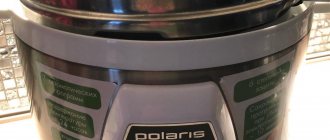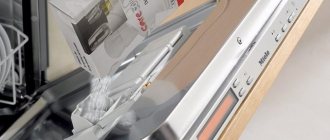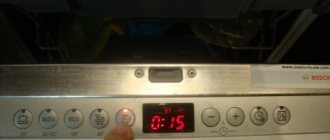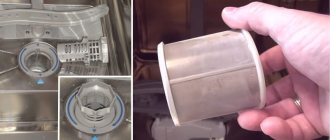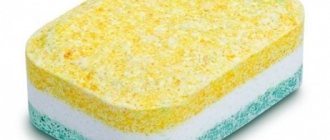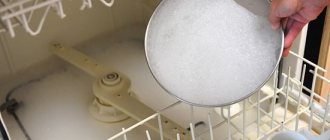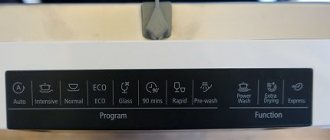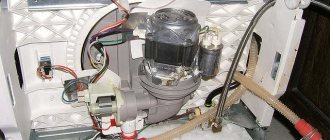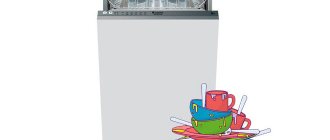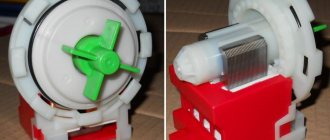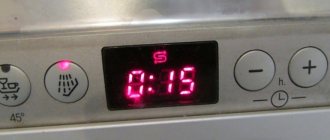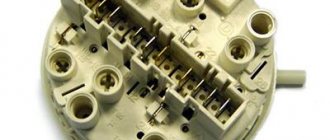However, people often use rather old dishes that were born much earlier than the era of dishwashers - and, of course, there are no marks on them. Fortunately, even antique utensils do not always have to be washed by hand - it all depends on the material from which it is made.
- Strained glass. All glass items can be safely washed in the dishwasher - baking dishes, glasses, salad bowls and others.
- Heat-resistant plastic. Food containers, microwaveable dishes and reusable bottles can be washed in the dishwasher unless they are marked with a prohibition sign. Also, plastic dishes often indicate the maximum temperature at which they can be washed.
- Ceramics, porcelain and faience without gilding or patterns. Ceramic is also a very durable material, but gilded borders and some designs (especially hand-applied over glaze) may not withstand heavy rinsing and detergent and may simply come off. However, plain ceramic plates can be safely washed in the dishwasher.
- Silicone. Baking and dessert dishes, spatulas and spoons are all machine washable. This also includes silicone toys for pets and children, pacifiers and bottles without stickers.
- Stainless and enameled steel. Pots, ladles and stewpans made from these materials can easily withstand machine washing. This also applies to cutlery and oven parts (lids, racks, baking sheets).
- Home Appliances
How to choose a dishwasher without standing at the sink every day
The importance of studying the manufacturer's instructions
Before starting operation, you should carefully read the instructions. It would seem an obvious rule, but nevertheless it is often neglected. The result is poor quality work or even equipment breakdown. The instructions explain in detail which dishes and cutlery can be washed in the dishwasher. The manufacturer's recommendations cover all aspects of using the dishwasher - from its installation to the choice of detergents. Compliance with them will help achieve optimal performance of kitchen appliances and high-quality dishwashing.
Wood and plastic
Wood suffers from prolonged exposure to hot water: it swells, increasing in size, and when it cools, it shrinks back, causing it to deform and crack. This applies not only to purely wooden objects - spoons, wooden toys, rolling pins and pestles, cutting boards, spatulas - but also to dishes with wooden elements: for example, frying pans with wooden handles are best washed by hand. Sometimes manufacturers apply a special water-repellent coating to wooden items and mark such dishes accordingly, but it’s still better not to take risks - the environment in the dishwasher is very aggressive.
With plastic, of course, it’s easier than with wood, but you still need to be more careful: you can definitely only wash items made of heat-resistant plastic in the dishwasher. You definitely shouldn’t put disposable tableware and plastic items without identification marks, with a pungent “chemical” smell, or items with glued parts in there. Thin plastic containers can easily become deformed.
Placement of dishes
Cleanliness of washing depends on the correct placement of dishes inside the dishwasher. Most Korting dishwashers are equipped with three baskets. The upper one, portable, is intended for cutlery and small kitchen accessories. The middle basket contains plates, saucers, cups, glasses and other serving utensils, and the lower basket contains large plates, dishes, pots, pans and other large utensils. The lower basket can be equipped with special folding holders for even distribution of items.
Preparing the dishes
A mandatory rule is preliminary cleaning of large food residues. Dirty and greasy utensils can be rinsed with hot water. Such preparation will protect the water recirculation filter from clogging and facilitate the operation of the equipment, improving the quality of washing.
Arrangement rules
The rules for placing dishes inside the PMM are described in detail in the manufacturer's instructions, but there are several general recommendations. The dishes are placed so that there is always a gap between the surfaces for free access of water. The lower basket is loaded first, then the upper. Cups and glasses are placed upside down on special holders, plates and saucers are turned with the recess towards the center of the basket. Large plates are placed at the edges, small ones - closer to the center. Pots, pans, deep bowls are turned upside down and placed at an angle. Place the baking sheets sideways so that water can penetrate into the upper basket. It is recommended to distribute cutlery evenly over the entire area of the basket. Fragile glass glasses require special attention; they should not come into contact with other objects. Most Korting models are equipped with a special basket that can securely hold up to 6 glasses. This makes them easier to place and allows you to clean them efficiently without worrying about their safety.
Dishwasher characteristics
The ability to wash the pan depends on:
- Dimensions of the device. Large dishes may not fit in the dishwasher hopper. If you have a compact model, you can only wash a 2-liter container. You won’t be able to fit saucepans that are too bulky into the narrow model either. If you want to wash large utensils, buy a full-size PMM.
- Functionality. If your machine does not have an intensive wash mode, then washing dirty pots is like light rain. It is advisable that the programs include soaking - with it the washing process will be more successful. Perhaps your model has a special program for pots. To find out, read the instructions.
- Washing class. Dishwashers are graded according to their washing class. Today you won’t see C- and D-class devices. Only class A and B equipment are available for sale. Class A machines are capable of washing the most difficult stains, plaque and congealed grease.
- Drying systems. Condensation drying is more common. How does it work? The products are heated and moisture is removed from their surface. This is an economical method but takes a long time. There are fewer models with turbo drying on sale. It allows you to dry plates faster, as air is used. This process requires energy. This is a less economical option. Users of PMMs with condensation drying often complain that moisture remains on the dried dishes.
Determination of water hardness
The hardness of water is determined by the amount of metal salts dissolved in it, mainly magnesium and calcium. The more salts, the higher the hardness indicators. Excess impurities cause scale to form on the heating element and reduce the quality of washing. The delivery package for PMM Korting includes special marker strips that determine hardness indicators. After identifying them, you need to set the required level on the dishwasher.
Vinegar
Pour a glass of vinegar directly into the bottom of the dishwasher. Start pouring a little at a time, half the volume is enough to start.
Run the dishwasher on normal cycle for a few minutes. Make sure the soap suds begin to dissolve. If not, pour another 1/2 cup and press start again.
If this does not help, add another cup of vinegar and repeat the operation. Or try another way.
Choosing household chemicals
Only specialized detergents can be used in the dishwasher. They should not be replaced with hand washing liquids or other household chemicals, the use of which may cause damage. For high-quality washing in PMM, regenerating salt, detergent and rinse aid are used.
Regenerating salt
It is necessary to soften hard water, which reduces the effectiveness of the detergent, causes scale and leaves stains on clean dishes. Therefore, water is supplied to the dishwasher through a special filter filled with softening resin. Regenerating salt is necessary to restore the properties of this filter. Salt consumption per wash cycle depends on the hardness level, so you need to pay attention to the salt consumption settings and set the appropriate level.
Detergent
The modern market offers a large selection of special chemicals for PMM in different forms - tablets, powders, gels. Multilayer tablets contain all three types of detergents necessary for washing dishes, as well as additional components - to improve the quality of glass drying, to protect seals from drying out, and others. They are convenient and practical, but are not suitable for quick washing - the layers do not always have time to dissolve. The gels are designed for delicate washing and are very convenient for washing glassware. Powders do an excellent job of removing heavy dirt.
Rinse aid
Rinse aid speeds up the rolling of water from clean dishes, preventing the formation of marks from dried drops. It is poured into a special container on the machine door, from where it is fed into the water for the final rinse. Thanks to its use, the process of drying dishes is significantly improved.
Comparison of the presented funds
Below we have combined important characteristics into one table. Take a look and decide on the best means.
| Model | Soluble coating | Aroma | Contains | Does not contain |
| Fairy Platinum All in 1 | Yes | lemon | oxygen bleach, enzymes | chlorine |
| BioMio Bio-total | Yes | eucalyptus | oxygen bleach, enzymes | chlorine, phosphates |
| Clean & Fresh All in 1 | – | lemon | oxygen bleach, enzymes | chlorine |
| Somat Standard | – | – | oxygen bleach, enzymes | chlorine, phosphates |
| Synergetic | – | lemon | – | chlorine, phosphates |
| Finish Quantum | Yes | – | oxygen bleach, enzymes | chlorine |
| Eared Nyan All in 1 | – | – | oxygen bleach, enzymes | chlorine, fragrances |
Dishwasher Care
The washing process is a serious burden for the dishwasher. Impurities in hard water, high temperatures, and food residues put the mechanism to the test. Therefore, these kitchen appliances require regular maintenance. After each cycle, it is advisable to wipe the chamber walls with a dry cloth, or leave it to dry with the door open. Periodically, it is necessary to remove the mesh filter from the bottom of the chamber and rinse it thoroughly under running water. Two or three times a year you need to carry out a complete cleaning using special products.
Following simple recommendations will ensure long and efficient operation of the dishwasher. The Korting company offers a large selection of dishwashers of different parameters, characterized by high reliability and stylish design. In addition, the brand produces washing tablets and dishwasher care products.
List of what you will need
To combat foam, there are products that everyone will probably have in their home:
- Distilled white vinegar.
- Olive oil or any other vegetable oil.
- Salt.
- Bowl or small bucket, container.
- Several dry towels.
- Liquid fabric conditioner.
- Defoamer Spa.
They are not used by everyone at the same time, but only when necessary. Choose the one that suits you best and take action.
Ice
If the dishwashing cycle has been set to hot, the hot water will likely cause soap scum to grow. Ice will help correct the situation.
Just add ice cubes to the foam, preferably more. Mixing them with plenty of table salt may also help.
